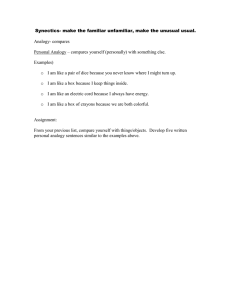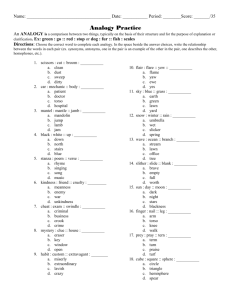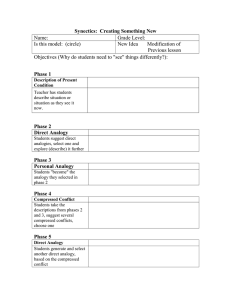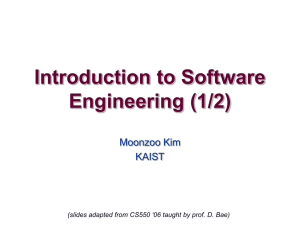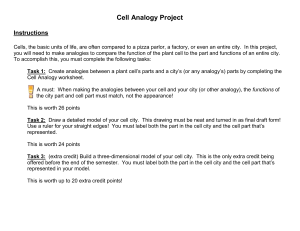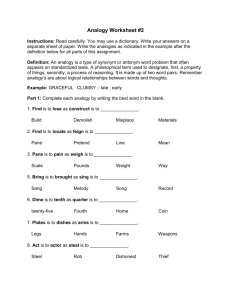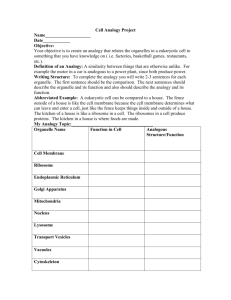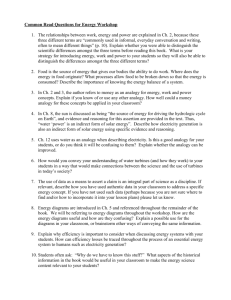IB2 Ch 15 Organization and Corporate Culture
advertisement
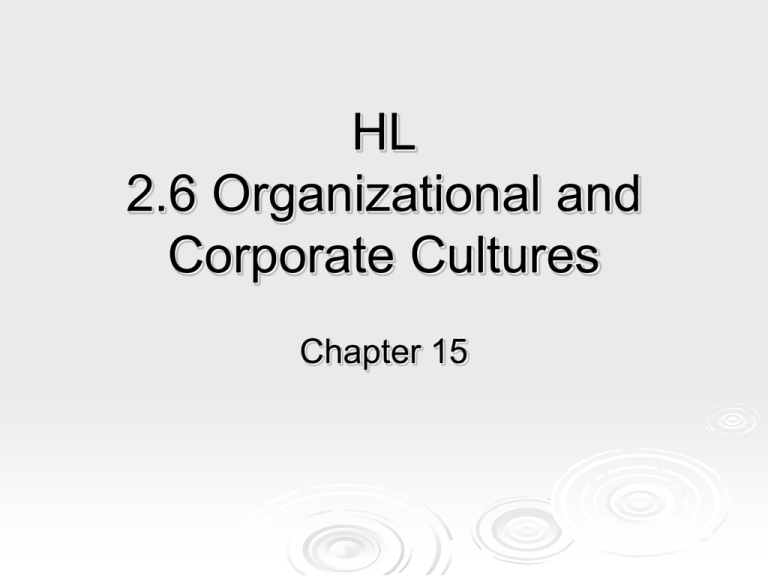
HL 2.6 Organizational and Corporate Cultures Chapter 15 HL-Organization Culture The values, attitudes, and beliefs of the people working in an organization that control the way they interact with each other and with external stakeholder groups. How can management influence corporate culture? Mission and vision statements Who is appointed to senior staff . (They are likely to share the same values and beliefs as the directors.) The organization’s ethical code of conduct Established strategies on social and environmental issues. The example upper management sets in how they treat employees and make decisions. Types of Organizational Culture (As identified by Charles Handy) Power Culture Role Culture Task Culture Person Culture Entrepreneurial Culture Power Culture Concentrating power among a few people Usually is associated with autocratic leadership. Decisions are made quickly Managers are judged on of spider web: results rather than how they Analogy there is no purpose obtain them. without the spider. Usually a hierarchical organization structure Motivation is likely to focus on financial rewards like bonuses. Role Culture Each member of staff has a clearly defined job title and role Usually associated with bureaucratic organizations like government. The structure of the organization is clearly defined with clear delegated Analogy big building: Solid and dependable – authority. not going anywhere fast Power comes from a person’s position Decision-making and risk taking are frowned upon. Tall hierarchical organization structures Task Culture Based on cooperation and team work Groups are formed to solve problems Communication may follow a matrix structure Analogy of a NET: strength is derived Creative & problem-solving spirit the from the many strands Very motivating environment that meets worker’s intrinsic needs Person Culture Individuals are given the freedom to express themselves and make decisions Analogy of a STARS: each person is different and operates alone Most creative type of culture No emphasis on teamwork People who thrive here may find it difficult to work in a structured environment Entrepreneurial Culture Encourages management and workers to take risks and encourage new ideas and business ventures. Success is rewarded but failure is not automatically criticized Motivation can be high among people who like a challenge and risk taking Culture Clash Corporate culture may clash with the needs of the organization hindering growth. A traditional family company converts to a public limited company A product-led business needs to change based upon desires of the market A private company may not be responding to customer needs A merger may occur with a other firm with a different culture Declining market share may be the consequence of an unmotivated staff Changing Culture NOT EASY Concentrate on the positive aspects of change Obtain the full commitment of all levels of the business: managers to lowest level employees Establish new objectives and communicate them Encourage bottom-up participation Train staff on the new value system Change the staff reward system; quit rewarding “the old way” Impact of Culture Values of business: what is and what is NOT acceptable Determines managers and employees treat each other A distinctive culture can support a brand – think GOOGLE Positive organizational culture has been clearly linked to long-term business success. Best Companies to Work For Whole Foods Video Clip Whole Foods


